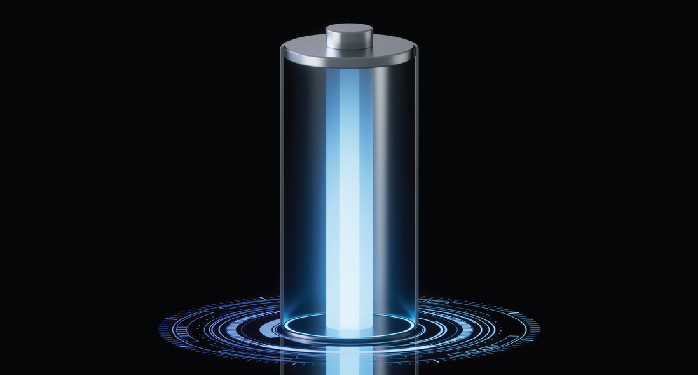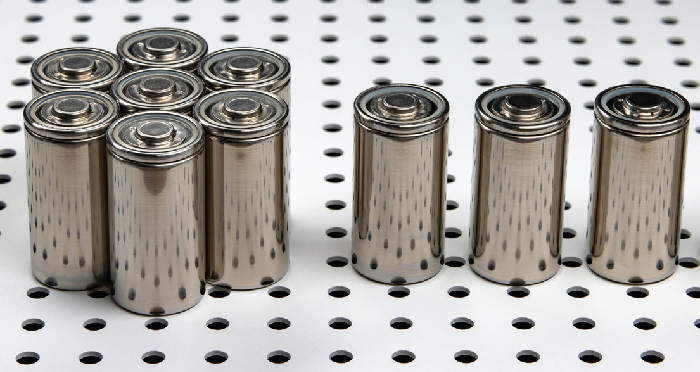It is widely recognized that sustainable battery technology is key to a greener future. Simon Engelke, PhD. seeks to disrupt the battery industry by challenging the status quo surrounding battery chemistry.
Simon developed a fascination with alternative energy sources at a young age. He begins: “I got a hydrogen fuel cell toy car from my dad. I was really inspired by tweaking with it.”
This fuel cell toy – coupled with an inspirational chemistry teacher in high school – ultimately led to Simon’s current career in battery technology.
Simon is the chair and founder of the Dublin, Ireland-based company Battery Associates. Battery Associates works within the global battery space to expedite development and increase access to sustainable options.
Every conventional electrochemical battery is comprised of the same three fundamental components:
- Anodes - the negative electrode that releases electrons to the external circuit
- Cathodes - the positive electrode that accepts electrons from the external circuit
- Electrolytes - the chemical medium which facilitates the flow of ions between the anodes and cathodes.

Image Credit: Thermo Fisher Scientific – Production Process & Analytics
Simon discusses the role of electrodes: “You have the cathode, and then you have the anode. The cathode is the more expensive part.”
The relative expense of the cathode is partly due to anodes being relatively simple. Anodes tend to be comprised of conductive and porous graphite or silica that accept and store ions from the electrolyte. Simon also highlights that cathodes can be more diverse, depending on the “different kinds of battery chemistry” used in their manufacture.
Simon outlined the two most commonly employed lithium-ion chemistries: Nickel Manganese Cobalt (NMC), and Lithium Iron Phosphate (LFP), highlighting that even within these chemistries it is possible to “do a lot of tweaks like reduce cobalt content and increase nickel content.” Making these types of changes has the potential to “increase energy density and reduce cost and sourcing challenges.”

Image Credit: Thermo Fisher Scientific – Production Process & Analytics
Simon believes that electrolytes offer significant scope for experimentation and expansion. This portion of the battery ensures that charge is transferred between the two electrodes. Discussing electrolytes, Simon notes that: “You can play around as a chemist, have all kinds of fun combinations.”
For example, lithium ions transfer charge through the electrolyte in lithium-ion batteries. This is typically achieved via lithium salts solvated using carbonates, esters, or ethers. Simon also notes that “Lithium is quite attractive because it is very light and very small. You can store a lot of them, but there’s other ions like sodium, magnesium, and potassium.”
Expanding on the use of non-lithium options,
You can look at what are all kinds of combinations, based on voltage differences.
Simon, chair and founder, Dublin
Much of Simon’s research lies in attempting to improve electrolytes. He continues, “It’s just the tip of the iceberg, looking at a really nitty gritty component in the battery.”
Battery chemistry continues to evolve as new materials and technologies are developed. “It’s fascinating because if you work with technology like this, you also keep competing against improving the status quo,” says Simon.
He also highlights that solid state and other developing technologies could lead to major advances in battery performance which constantly raise the bar for evaluation. He also notes that existing chemistries “are going to keep improving.”
Simon highlights how improvements continue to be made in this space, for example, by “tweaking the graphite, the cathodes, using additives, and all these kind of fun bits.” This leads to incremental improvements, highlighting that “maybe it’s not 20 % a year, but maybe it’s like 3 % or 5 %.”
Current research in the battery space is centered around improving battery components. For example, lithium iron phosphate (LFP) battery chemistry has become the dominant lithium-ion chemistry in recent years, replacing lithium cobalt oxide (LCO) batteries.
This progression in market-dominant battery chemistry echoes the field’s wide-ranging complexities, whereby chemistries shift based on not just research, but also concerns around safety, cost, and the ethical sourcing of cobalt.
Cobalt is expensive, and there are a lot of concerns with sourcing from, for example, the Democratic Republic of Congo.
Simon, chair and founder, Dublin
In terms of the future of battery research, Simon believes that upcoming changes in the industry are difficult to predict. He states: “There are so many technologies and different approaches. Right now, I’m concerned about how we scale up what we already have.”
Simon believes that demand for lithium-ion batteries will continue, but there remains the possibility that alternatives such as sodium-ion battery chemistries may gain an increasing market share as technology improves.
I will keep an open mind to what is coming. Being fascinated by chemistry and things, it’s like a massive playground for just testing things.
Simon, chair and founder, Dublin
Simon Engelke’s work is explored in much greater depth in a recent interview on the Bringing Chemistry to Life podcast. This podcast explores his education, career trajectory, and a detailed discussion around the future of batteries and battery chemistry research.
Acknowledgments
Produced from materials originally authored by Thermo Scientific.

This information has been sourced, reviewed and adapted from materials provided by Thermo Fisher Scientific – Production Process & Analytics.
For more information on this source, please visit Thermo Fisher Scientific – Production Process & Analytics.